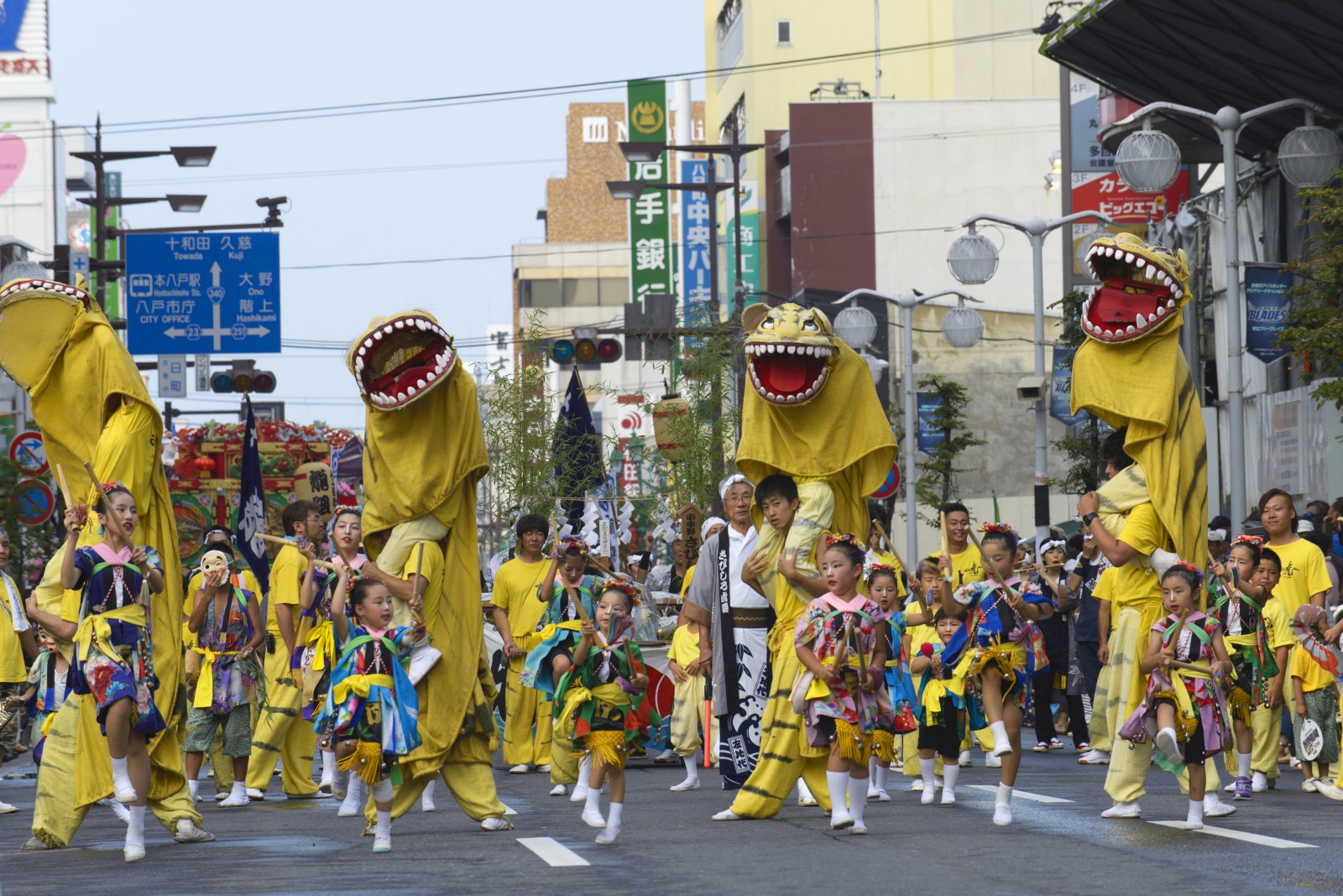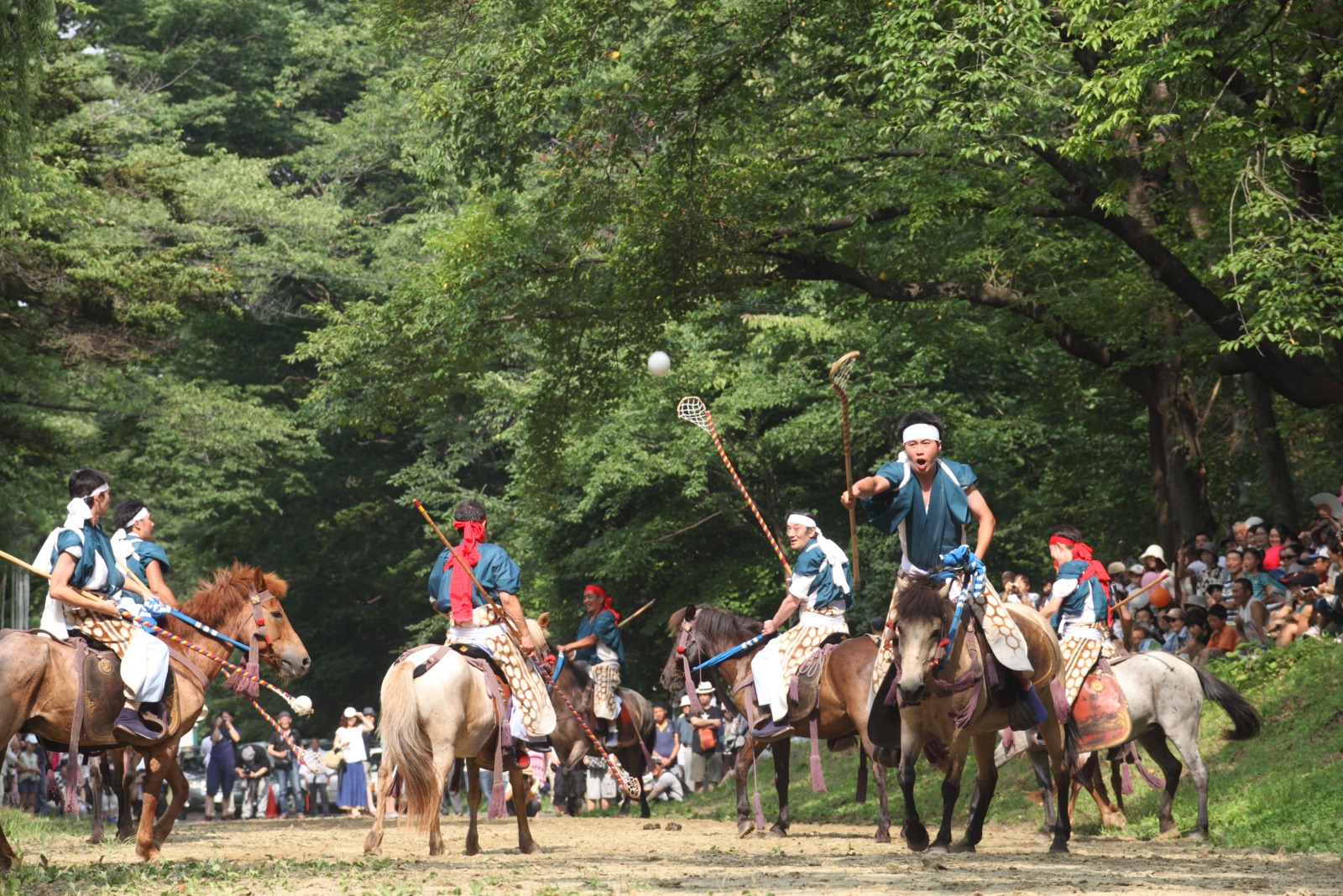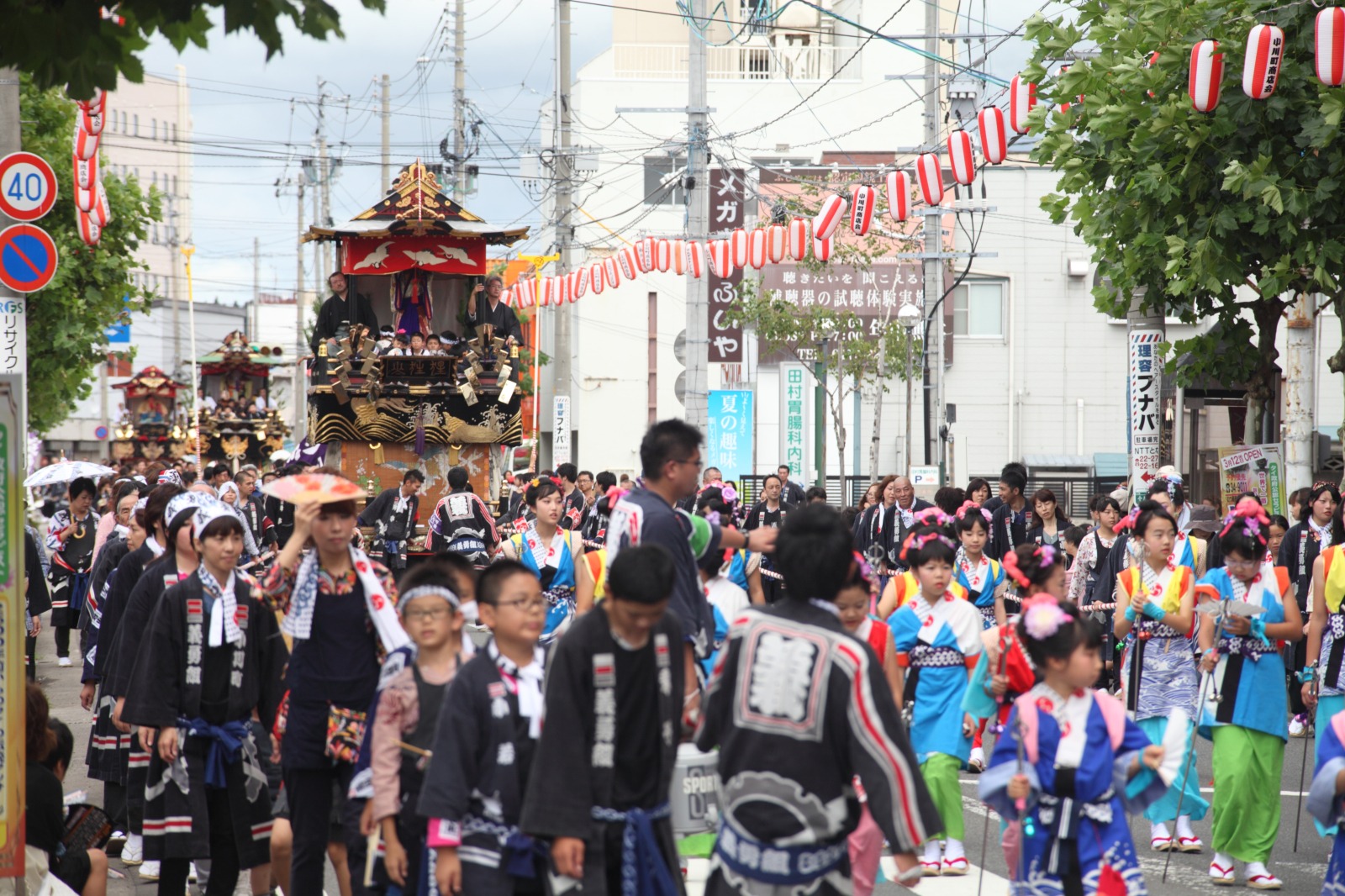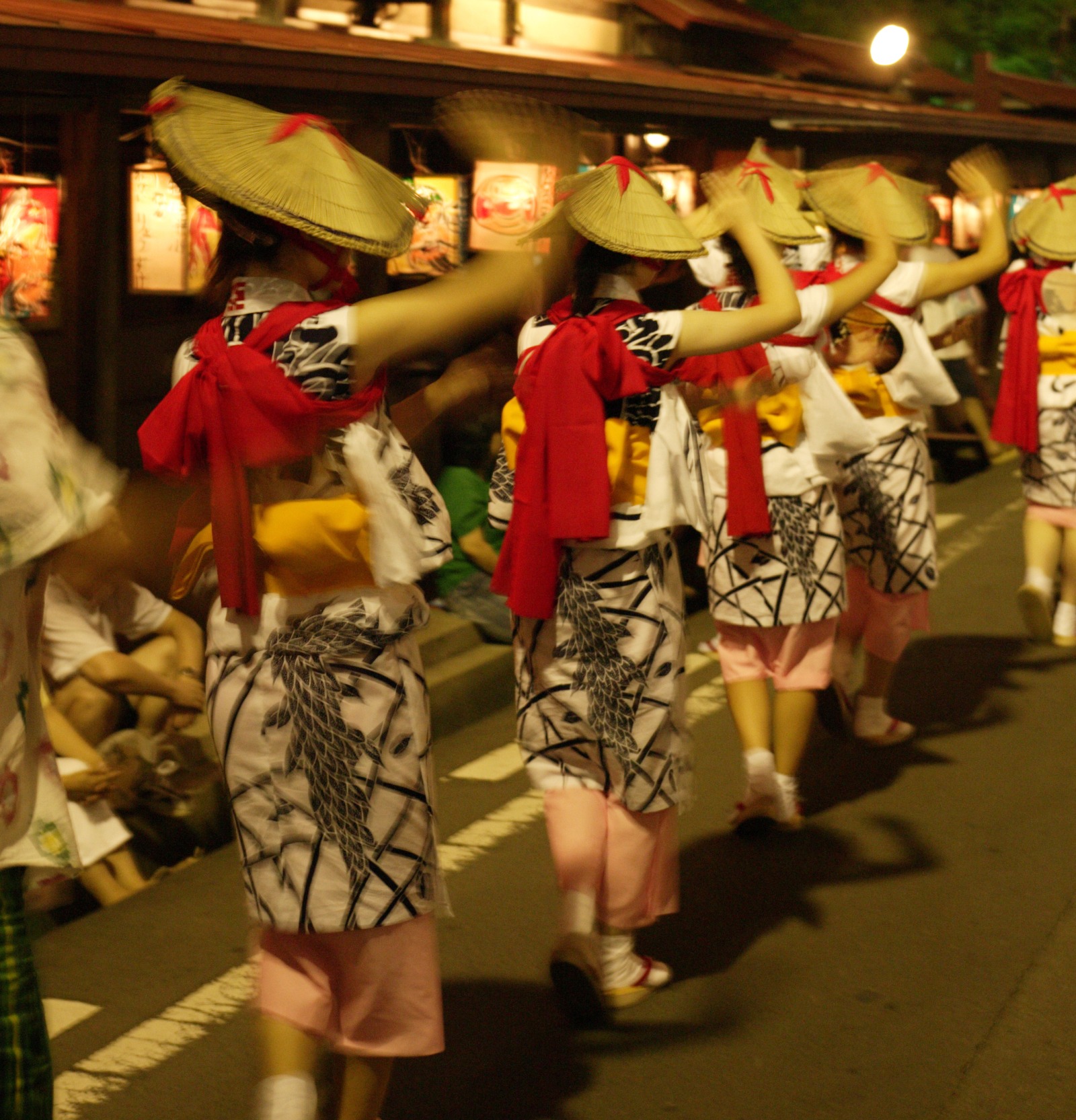Not just “Nebuta”: Colorful and energetic summer festivals of Aomori

As a region with such long, harsh winters, summer has always held a special place in the hearts of the people of Aomori. When you think of summer festivals in Aomori, the first that come to mind are probably the “Nebuta” or “Neputa” fire festivals with their tall, lantern-like decorated floats. However, these are only one kind of summer festival in Aomori. Unique and exciting summer festivals are held throughout the prefecture, including the following major events that draw spectators from far and wide.
Hachinohe Sansha Taisai Festival (Hachinohe City)
This festival’s name literally translates to “Grand Festival of Three Shrines,” a hint at its incredible scale. Held from July 31 to August 4, it attracts over one million visitors each year. The three participating shrines are Ogami Shrine, Chojasan Shinra Shrine, and Shinmeigu Shrine in the city of Hachinohe. The highlight of the festival is without a doubt its enormous and spectacular floats, 27 of them to be precise, which depict figures from classical Chinese and Japanese myths and legends, scenes from kabuki plays, and so on. Unlike the floats used in Aomori’s “Nebuta” festivals, which are usually created by professionals, the people who make these floats are ordinary members of the community who work feverishly in the evenings and on weekends to complete the magnificent structures. This, plus the fact that the themes and subjects depicted in them change every year, means that the floats of the Sansha Taisai Festival are truly one of a kind. A contest is also held during the festival with a prize awarded to the best float, which results in fierce competition. The floats can be up to ten meters in height and include elements such as rocks, waterfalls, waves, castles, and bridges. Some even have moving contraptions. When all of the floats and portable shrines (mikoshi) come together in a grand procession on August 1 and 3, they create a “real-life picture scroll” that is almost overwhelming in its lavishness and splendor. In recognition of their cultural value, the floats of the Sansha Taisai Festival have been designated as an Important Intangible Folk-Cultural Property by the Japanese government and registered as a UNESCO Intangible Cultural Heritage.
In addition to the floats, the festive processions also feature a number of traditional dances and other performing arts. Among the most popular of these is the Toramai or Tiger Dance, which entertains parade spectators with its comical movements. Sometimes the tiger head will even “bite” spectators, but don’t be afraid! It is said that being bitten by the tiger will bless you with good health. On August 2, the peak of the festival, a ritual game of Kiba Dakyu is also played at Chojasan Shinra Shrine. This polo-like equestrian sport was once practiced by Japanese aristocrats as a form of military training. However, it lost popularity in modern times and now survives only as a cultural asset. Thus, the Hachinohe Sansha Taisai Festival is a truly rare opportunity to see this historic sport in action.
Tanabu Festival (Mutsu City)
Held for three days from August 18 to 20, this summer festival is the largest on the Shimokita Peninsula. It is the annual festival of Tanabu Shrine, which enshrines the region’s guardian spirits. Each night of the festival has a unique highlight. On the first night, August 18, a procession of women in traditional costumes perform the Oshimako Nagashi Dance to the sound of centuries-old music. On the second night, the deity of Tanabu Shrine is transferred to a portable shrine (mikoshi) and paraded through the town. The mikoshi bearers throw the shrine into the air and then catch it again and again, accompanied by rowdy shouts, in a ritual intended to amuse the deity. In addition to the portable shrine, festivalgoers also pull five floats representing each neighborhood of the Tanabu district. Ornately decorated, the floats have two stories, with the deity of each neighborhood enshrined on the upper story and musicians riding in the lower story. They resemble the floats used in Kyoto’s Gion Festival, from which the Tanabu Festival is thought to be derived. Starting during Japan’s feudal era, this region was connected to Kyoto via a cargo ship route along the Sea of Japan. The ships carried goods such as rice but also brought with them traditions and fashions from the former capital, and it is the influence of the Gion Festival that gives the Tanabu Festival a different flavor from other float festivals in Aomori Prefecture.
Finally, on the last night, the festival reaches its climax with the ritual known as Goshawakare (“Farewell Parting of the Five Floats”). The five floats meet at the main intersection of the town, where a massive wooden barrel of sake is opened and shared by float-pullers and spectators alike. The festival ends with a promise by the revelers to meet again in the following year. Then, the floats return to their respective neighborhoods.
Kuroishi Yosare (Kuroishi City)
This festival is known alongside Awa Odori of Tokushima Prefecture and Gujo Odori of Gifu Prefecture as one of the three great dance festivals of Japan. On August 15 and 16, Kuroishi City’s Nakamachi Komise shopping arcade, which preserves the atmosphere of feudal-era Japan with its traditional wooden residences and shops, comes alive to the sound of dancing and music. The festival consists of three kinds of dances. In the Nagashi dance, thousands of dancers perform in rows, all wearing braided straw hats and matching yukatas. It is an incredible sight to behold. The Mawari dance is a circle dance in which audience members are invited to participate. The Kumi dance features groups of 20 to 30 people from each neighborhood dancing to the music of the Tsugaru shamisen, taiko drums, and traditional folk songs. With its interactive nature, this dance festival brings excitement to residents and tourists alike.
If you’re planning a visit to Aomori in the summer, then you definitely won’t want to miss the chance to see one of these thrilling festivals up close. You can imagine the elation of people in olden times as they celebrated the fact that they had survived another rugged winter and lived to see a prosperous harvest. Grateful for the bounty of nature, they expressed their joy through lively music, dancing, and festivities. This passion is kept alive today by local residents who honor the traditions of their ancestors, and it’s their devotion to tradition that enables the amazing festivals of Aomori to be preserved for future generations.







